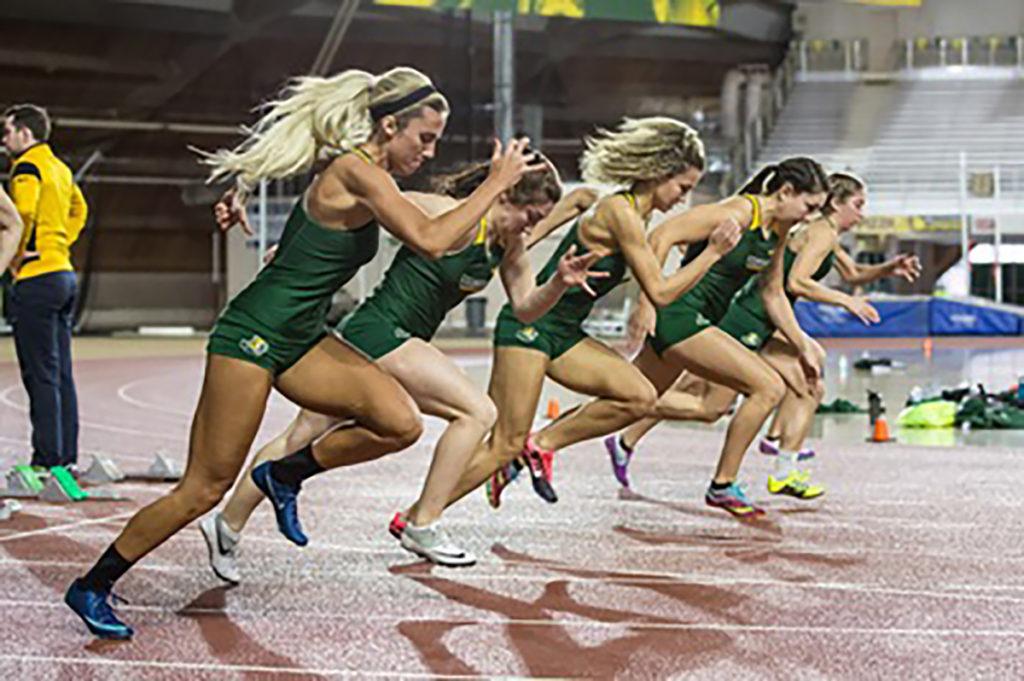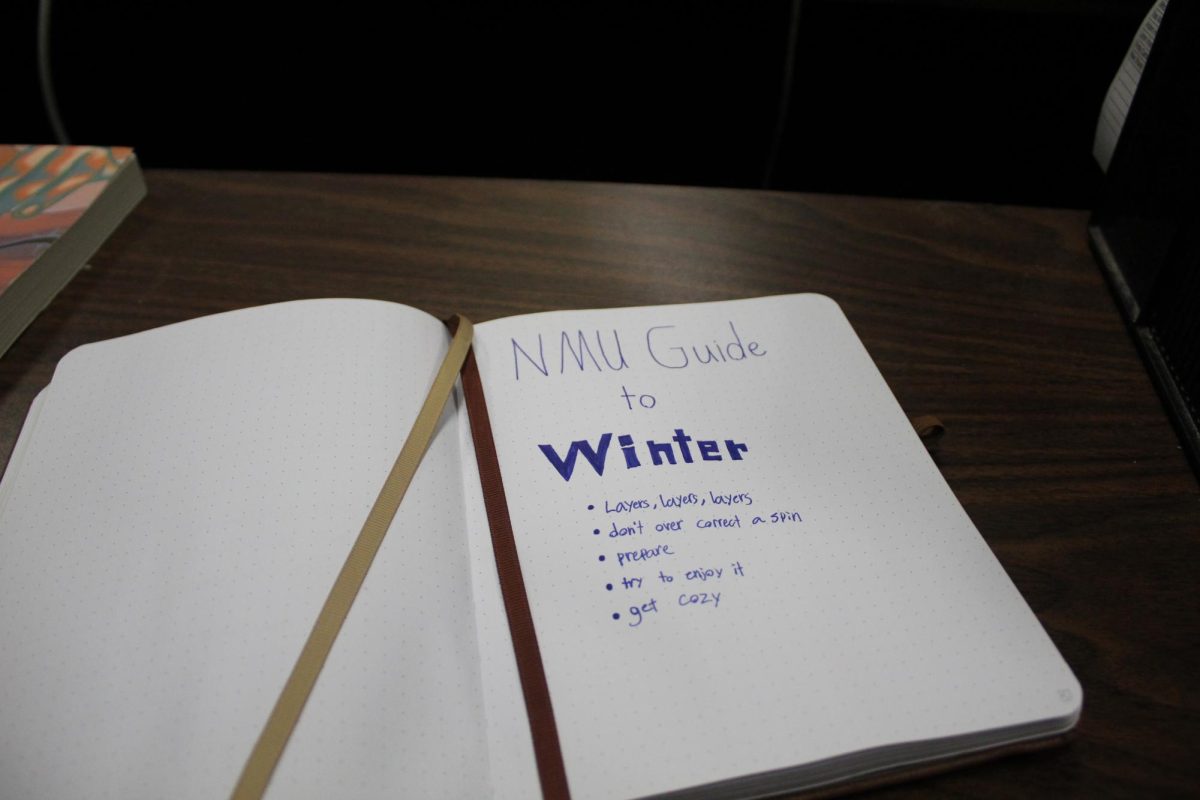Autopsy results for the death of NMU soccer player Arianna Alioto have confirmed that the cause of death was accidental drowning.
Alioto, an 18-year-old freshman from Columbia, Mo., was found unconscious in the PEIF pool on Friday, Nov. 30 following a routine soccer team practice that ended shortly after 5 p.m.
 According to the full police report, which was released with the autopsy results late last week and alluded to a timeline of the events leading up to Alioto’s death, the soccer player may have drowned in the final minutes of her team’s hour-long practice. The autopsy results confirm that Alioto died sometime between 4:45 and 5 p.m., according to Public Safety and Police Services Director Mike Bath.
According to the full police report, which was released with the autopsy results late last week and alluded to a timeline of the events leading up to Alioto’s death, the soccer player may have drowned in the final minutes of her team’s hour-long practice. The autopsy results confirm that Alioto died sometime between 4:45 and 5 p.m., according to Public Safety and Police Services Director Mike Bath.
“The autopsy report did confirm what we stated earlier, that there was no physical trauma to the body,” Bath said in a news release. “However, it did not have any other conclusive findings related to the incident other than that Ms. Alioto’s death was due to drowning and the nature of the incident was accidental.”
After substantial interviews with teammates, witnesses and first responders, investigators have pieced together a relative timeline of the drowning. The full NMU Public Safety report, which contains information regarding these interviews, was released to the North Wind by way of the Freedom of Information Act.
According to the police report, Alioto’s teammates recall last seeing her in the lap pool of the PEIF. The team began practice by swimming competitive laps in the lap pool, with two athletes per lane. One teammate recalled that Alioto beat her both times they swam against each other at practice that day. According to head soccer coach Matt Granstrand and a number of other teammates, Alioto was known to be a moderate to strong swimmer.
Following five one-length laps, the team began a sort of tug-of-war game in the lap pool as part of their workout for the day.
One player said that during the game, she had accidentally kicked Alioto in the knee that had previously been injured. Alioto had in fact been red-shirted the prior soccer season because of a torn ACL, which she was still rehabilitating at the time of the drowning. The player said that Alioto assured she was fine and continued with the workout.
When the lap pool workouts ended, the team was told by Granstrand to exit the lap pool and enter the dive tank for the remainder of practice.
None of Alioto’s teammates recalled actually seeing her exit the lap pool upon later questioning. However one teammate, who had exited the pool first upon Granstrand’s request, believed that everyone, including Alioto, had exited the lap pool.
“I turned and looked at (Alioto),” she later said in a written statement. “We made eye contact. She was standing in the shallow end by the diving board. She looked tired (everyone did), and her face was just blank.
“She looked fine, just like she was tired and was taking her time. I didn’t think anything of it.”
Alioto’s partner in the final match of tug-of-war said in an interview that she believed she was the last one swimming in the north end of the lap pool with Alioto before she exited and joined the rest of the team in the dive tank. She said that during tug-of-war, she was pulling against Alioto, who provided little resistance and appeared to be extremely tired. This player also said that Alioto acknowledged her own performance after the game as less than her full effort by stating, “well that was…I don’t even know.”
This player, as well as the others, said she was uncertain if Alioto had exited the lap pool after the aquatic workouts and games. None of Alioto’s teammates recall seeing her in the dive tank for the final 15 minutes of practice, which were from 4:45 and 5 p.m.
Teammates and Granstrand asserted that Alioto did not appear ill at all before or during practice, and was not complaining of anything while at practice. She had appeared tired, many said, but it was a difficult workout and that was to be expected. In fact, one player said later that Alioto was being “happy,” “talkative” and “fine.”
When practice ended at around 5 p.m., the team huddled together and was then dismissed. The athletes then walked over to get their towels on the bleachers near the east side of the pool deck, where many had reported seeing Alioto’s brown towel but had thought nothing of it. Alioto’s roommate in Magers Hall saw Alioto’s swim goggles on the pool deck and picked them up, thinking Alioto had forgotten them and had already left for the locker room.
The lifeguard at the time said that she followed her typical closing procedure after the team left the pool area, first checking and locking the men’s locker room, then turning the radio off in the lifeguard office, scanning the pool and completing her closing duties. She then went to the women’s locker room, locked the door from the inside and left the building.
Once in the locker room, none of the athletes recalled seeing Alioto. While some thought that Alioto had perhaps left quickly to catch her ride home, a handful began to search for their missing teammate. Remembering that their teammate had said something about hitting Alioto’s injured knee, Alioto’s roommate and another teammate, went to the trainer’s room to see if Alioto was there. They also checked several other rooms in the PEIF and Superior Dome. When the pair were unsuccessful in finding Alioto, they contacted Granstrand at approximately 5:40 p.m. to see if he had seen her.
Meanwhile, at around 5:33 p.m., an NMU student who had been working out on the elliptical machines in the upstairs of the PEIF since around 4:30 p.m., was getting ready to go home when she spotted a body in the lap pool of the closed pool area. The student ran downstairs and notified an information center employee of what she had seen.
Upon notification, recreation advisor Katrina Theut, who was working the information center, told a student employee to come with her to the pool. The two employees and the student then ran to the pool, where they found Alioto lying face down under the surface of the water in lane four at the north end of the lap pool.
Theut immediately jumped in the water and brought Alioto to the surface by her armpits while the student retrieved a backboard from a nearby wall and the other employee dialed 911. The student then jumped in the water to assist in Alioto’s removal from the water. A student assistant then entered the pool area and helped with the rescue attempts.
Upon removing Alioto from the water, Theut proceeded to administer rescue breaths, which were unsuccessful due to an obstructed airway. She then performed five total cycles of 30 compressions, all unsuccessful. Medical personnel arrived shortly after Theut’s attempts at resuscitation. The student assistant noted later that Alioto had been foaming slightly at the mouth but had “good color” upon her removal from the pool, making him think she hadn’t been in the pool for very long. He also noted that her tongue was very swollen.
Many questions over Alioto’s medical history have been raised since the drowning. Alioto’s roommate said that she knew Alioto was taking five to six pills a day, but she wasn’t sure what exactly they were for other than epilepsy. Alioto had a history of epilepsy, and her roommate had seen her experience a seizure only one time, which was in the summer of 2012. Alioto’s mother told Dean of Students Christine Greer that her daughter could only go for a day and a half without taking her epilepsy medication. Alioto’s roommate said that, upon checking Alioto’s weekly medication container on the morning of Dec. 1, she saw that the medications for the morning of Nov. 30 were still there.
When asked if he knew of her history with epileptic seizures, Granstrand said he didn’t.



























